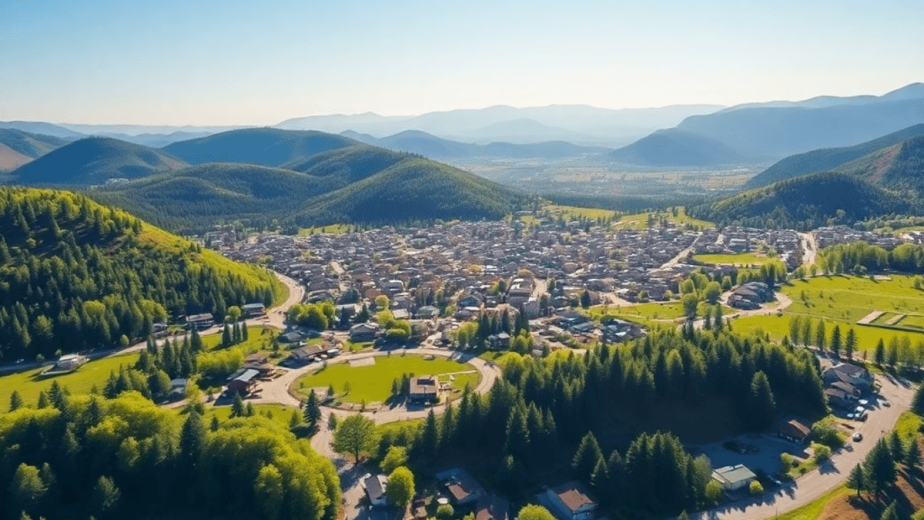May is Wildfire Prevention Month, a time dedicated to raising awareness about the importance of preventing, preparing for, and mitigating wildfires.
By understanding the history and significance of this designation, individuals and communities can take proactive measures to reduce wildfire risks and protect our environment.
The Role of Weather in Wildfire Prevention Timing
Weather Conditions in May
Hotter and drier weather conditions in May significantly increase the risk of wildfires. These conditions create a perfect storm for the ignition and rapid spread of fires, posing a serious threat to communities and ecosystems.
Urgency of Wildfire Prevention Efforts
During this critical period, proactive measures are essential to reduce wildfire hazards. Increased vigilance, adherence to fire safety regulations, and proper disposal of flammable materials are crucial steps individuals can take to prevent wildfires.
Actions Individuals Can Take
- Clearing dry vegetation around homes and creating defensible space can help mitigate fire risks.
- Regularly maintaining gutters, clearing debris from roofs, and having an evacuation plan in place are vital preparations for the wildfire season.
By understanding the impact of weather on wildfire behavior and taking proactive steps to reduce risks, individuals can play a key role in preventing the devastating consequences of uncontrolled fires.
Evacuation Preparedness: A Key Focus for Wildfire Prevention Month
Wildfire prevention goes beyond minimizing ignition sources and managing vegetation. One crucial aspect is preparing for a potential evacuation. When wildfires threaten communities, the time to act is limited. Being ready can make all the difference in ensuring safety and reducing stress during emergencies.
Review Home Insurance Policies
Verify that your home insurance covers wildfire-related damages. Understand policy limits and any exclusions specific to fire or smoke damage. Update coverage if necessary to match current property value and risk factors. Keep digital and physical copies of important documents accessible.
Create Comprehensive Emergency Plans
An effective emergency plan outlines clear steps for you and your family to follow if evacuation becomes necessary. Key elements include:
- Designating multiple evacuation routes and destinations.
- Preparing an emergency supply kit with essentials like water, medications, important papers, and clothing.
- Establishing communication protocols—how family members will stay in touch if separated.
- Planning for pets and livestock to ensure their safety.
Regularly practice the plan to build familiarity and confidence.
Sign Up for Community Alerts
Local authorities often provide real-time updates about wildfire threats through alert systems. These notifications may include evacuation orders, road closures, or safety tips.
Register for alerts via text messages, emails, or mobile apps specific to your area. Stay informed about wildfire conditions through official channels such as fire department websites or social media accounts. Encourage neighbors and relatives to sign up as well, creating a network of informed residents ready to respond quickly.
Preparedness reduces chaos during critical moments. Reviewing insurance policies ensures financial protection if disaster strikes. Emergency plans provide structure amid uncertainty. Community alerts keep you connected with evolving risks. Together, these steps empower you to act decisively when wildfires approach.
Understanding Post-Wildfire Flood Risks: An Important Part of Wildfire Prevention
Wildfires can have a devastating impact on the environment, particularly on vegetation and soil. When a fire occurs, it destroys plants and vegetation that play a crucial role in absorbing water and preventing erosion. As a result, after a wildfire event, the risk of flooding and mudflows significantly increases.
The Impact of Wildfires on Vegetation and Soil
Vegetation acts as a natural sponge, absorbing rainfall and slowly releasing it into the ground. However, when wildfires sweep through an area, they completely destroy this vegetation cover. Without plants to absorb water, heavy rainfalls can quickly run off the land, leading to potential flooding.
Additionally, wildfires can also damage the soil structure. Healthy soil is capable of retaining moisture and allowing water to percolate through it. But intense heat from fires can cause soil particles to become hydrophobic (repellent to water), further exacerbating the flooding risk.
Awareness and Preparedness for Flood Risks
While much attention is given to fire risks during wildfire season, it’s equally important to be aware of the potential flood risks that follow. Communities located near areas prone to wildfires should not only focus on fire prevention measures but also prepare for possible flooding events.
Here are some steps that can be taken:
- Educate yourself and your community: Understand the relationship between wildfires and flooding. Share this knowledge with others to raise awareness.
- Develop an emergency plan: Create a plan that includes evacuation routes, communication methods, and safe meeting places in case of both fire and flood emergencies.
- Implement erosion control measures: After a wildfire, consider implementing techniques such as planting cover crops or installing silt fences to prevent soil erosion and mitigate flood risks.
- Stay informed about weather forecasts: Monitor weather conditions regularly, especially during rainy seasons or after wildfires occur.
By being proactive in addressing both fire and flood risks, we can better protect our communities from the devastating impacts of these natural disasters.
Collaborative Efforts: The Role of Government Agencies and Communities in Wildfire Prevention
State and federal agencies play a crucial role in reducing wildfire risks through coordinated efforts aimed at public education campaigns and community-based planning initiatives.
Government Agencies Working with Local Communities
Government agencies work closely with local communities to raise awareness about:
- Wildfire prevention strategies
- Evacuation procedures
- Emergency response protocols
Public Education Campaigns
Public education campaigns are designed to inform residents about the importance of:
- Creating defensible spaces around their properties
- Adhering to fire restrictions
- Reporting potential fire hazards promptly
Community-Based Planning Initiatives
Community-based planning initiatives involve collaborative efforts between:
- Government agencies
- Residents
- Local organizations
These initiatives aim to develop comprehensive wildfire prevention and emergency response plans tailored to specific geographic areas.
By fostering partnerships between government entities and communities, proactive measures can be implemented to:
- Reduce wildfire risks
- Enhance preparedness levels
- Promote a culture of safety and resilience in high-risk areas
Conclusion
Preventing wildfires requires continuous and coordinated action from all levels of society. As an individual, you have a crucial role to play by staying informed, preparing your home, and getting involved in local prevention efforts. Communities can strengthen their ability to bounce back through shared resources, education, and emergency planning. Government authorities can help by enforcing rules, funding prevention programs, and leading public awareness campaigns.
The reason why May was chosen as Wildfire Prevention Month is because it coincides with the increasing weather risks that make wildfires more likely. Understanding this connection can motivate us to take proactive measures during this critical time.
Key points to remember:
- Wildfire prevention requires ongoing vigilance beyond a single month.
- Collaboration among individuals, communities, and governments amplifies effectiveness.
- Preparedness includes fire risk reduction and readiness for related hazards like evacuation and post-fire flooding.
By committing to these efforts, we can protect lives, property, and the environment for future generations.
FAQs (Frequently Asked Questions)
Why is May designated as Wildfire Prevention Month?
May is designated as Wildfire Prevention Month due to its significance in marking the onset of hotter and drier weather conditions that increase wildfire risks. This timing helps raise awareness and encourages preparedness to mitigate wildfire hazards effectively.
How do weather conditions in May influence wildfire prevention efforts?
In May, the hotter and drier weather conditions contribute to elevated wildfire risks. Understanding this seasonal change emphasizes the urgency for individuals and communities to take proactive actions, such as reducing fire hazards and preparing emergency plans during this critical period.
What steps should individuals take during Wildfire Prevention Month to ensure evacuation preparedness?
During Wildfire Prevention Month, individuals should review their home insurance policies, develop comprehensive emergency evacuation plans, and sign up for community alerts. These measures ensure swift and safe evacuation if a wildfire threat arises.
What are the post-wildfire flood risks that communities should be aware of?
After wildfires, damaged vegetation and soil reduce the land’s absorption capacity, leading to increased risks of flooding and mudflows. Awareness and preparedness for these post-fire flood hazards are essential components of comprehensive wildfire prevention strategies.
How do government agencies and communities collaborate in wildfire prevention?
State and federal agencies play a crucial role by conducting public education campaigns and supporting community-based planning initiatives. These collaborative efforts enhance public awareness, preparedness, and resilience against wildfire risks.
What ongoing efforts are necessary to effectively prevent wildfires and protect the environment?
Effective wildfire prevention requires continuous collaboration among individuals, communities, and authorities. Ongoing efforts include mitigating wildfire risks through education, preparedness planning, hazard reduction, and fostering community resilience to safeguard our environment.



